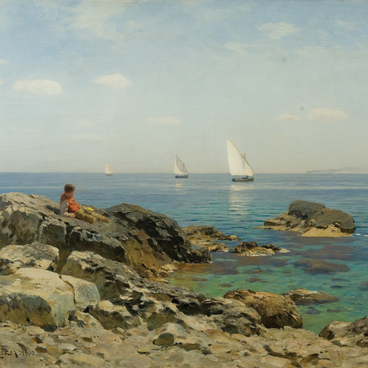Alexandr Panteleev was a Soviet artist who entered the history of art as a leading master of the industrial landscape. By the end of the 1960s, Panteleev had formed an original idea of an industrial landscape. By this time, the agenda of the new variety of landscape genre had changed. Now the aim of the artists was to demonstrate technical and industrial facilities as an integral part of the modern world, as a second nature. Panteleev had a firm belief in the need to create a synthetic image of the industry.
“My crooked-angular painting, ” the painter called his artistic style. The artist sought harmony in the depiction of industrial objects, and he found it. Since the industry was perceived as nature, it had to resemble the original environment. Such a juxtaposition is observed in Panteleev’s landscapes. The Ural Mountains in the work “At Drilling Rigs” attract the artist no less than industrial forms. By their tectonics, shifts and fractures of the rock, they affect the entire compositional structure of the painting.
Panteleev’s industrial landscapes, as well as the works of other Soviet artists, are characterized by heroization. It originates from the perception of the new technical world as the result of gigantic human efforts. Therefore, as the researchers note, industrial images in the paintings of many Soviet artists, among whom Panteleev occupies one of the first places, often took the form of representative art.
Panteleev’s paintings require special attention and
long study.



